With 245 million users and $2 billion in revenue, Zillow is truly the most successful real estate platform in the US!
Its popularity can be explained by the fact that over the years Zillow has become nearly everything to everyone in the real estate industry:
- For buyers, it is the largest openly available database of home listings in the US and an array of useful free tools for home-shopping
- For sellers, it is an opportunity to market the house in front of the biggest audience of buyers
- For industry professionals, it is the biggest advertising network on the market.
Want to follow Zillow’s footsteps?
Then, let’s dissect Zillow’s business. Let’s analyze its strengths and weaknesses, as well as see what it takes to create a website like Zillow.
Zillow Inc., The Great and the Mighty
In the past, property sellers and buyers relied solely on newspaper advertisements, generic buy and sell sites, and agents. Then in 2006, former Microsoft and Expedia executives Rich Barton and Lloyd Frink decided that there should be a better way to buy and sell houses. Zillow revolutionized the industry by openly sharing the nationwide house listings data, which has formerly been available only to real estate professionals.
Since then, Zillow grew into a giant group of companies that together cover the entire property buying cycle: buying, renting, selling, and financing. Its brands range from real-estate marketplaces for end clients to marketing software for agents and brokers.
One of such marketplaces is Trulia, which has been a long rival of Zillow up until Zillow has acquired it for $2.5 billion in a stock-for-stock transaction in 2015.
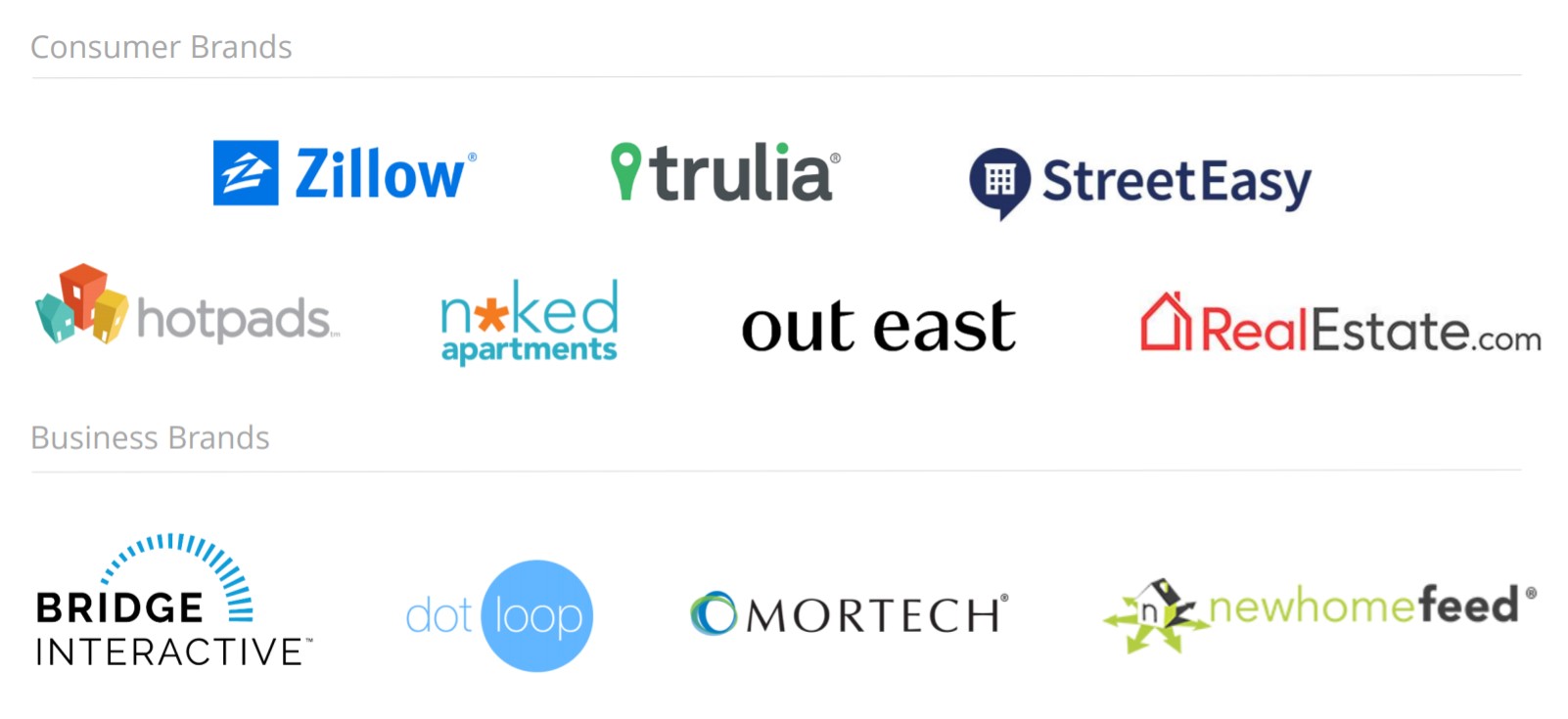
Zillow’s mission is: “to build the largest, most trusted and vibrant home-related marketplace in the world”.
Over a billion dollars in revenues later, one can safely say they’ve already achieved it. Indeed, the company’s results are astounding:
- 245M unique users a month
- $2B annual revenue in 2022
- 140M U.S. homes
- 5,724 employees
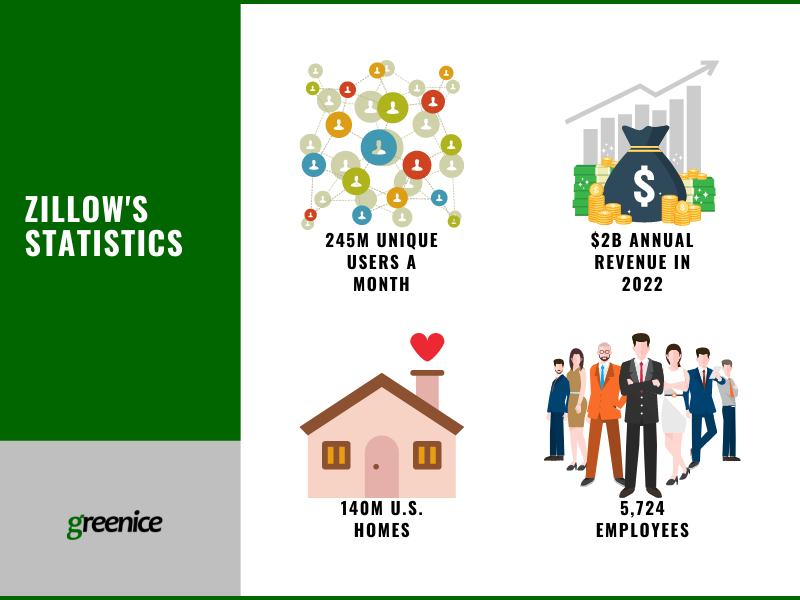
Competitive Landscape
Here are the top real estate platforms of the US, Canada, Europe, and Singapore divided by their audience size (organic traffic as seen in ahrefs).
| Website | Traffic (ahrefs)* | Geography | Peculiarities |
| Zillow.com | 16.8M | USA, Canada | Listings are generated from multiple sources with a big focus on user-generated listings |
| Realtor.com | 16M | USA | Portal of the National Association of Realtors in the USA (MLS listings). |
| Trulia.com | 7.3M | USA | Focus on information about neighborhoods (user-generated+MLS). |
| Redfin.com | 8.7M | USA, Canada | Brokerage run platform with MLS listings. |
| Homes.com | 2.9M | USA, Canada | Homes is one of the oldest websites that use MLS. |
| Homesnap.com |
46.7K |
USA |
The website focuses primarily on agents and uses MLS data. |
| Rightmove.co.uk | 23.8M | UK | The largest real estate portal in the UK. |
| Zoopla.co.uk | 5.5M | UK | The second largest property portal in the UK, uses various open-sources of listings, such as the Royal Mail's postcode database and the HM Land Registry property transactions database. |
| Immo Scout24.de | 10.2M | Germany | German real estate marketplace. |
| Funda.nl | 5.5M | the Netherlands | The leading homes platform in Holland. |
| Finn.no | 5.1M | Norway | Norwigian housing platform. |
| Hemnet.se | 2.4M | Sweeden | Go-to place for property search in Sweeden. |
| Etuovi.com |
2.8M | Finland | The main property portal of Finland, has a pay-to-list model and virtual tours. |
| boligsiden.dk |
1.1M | Denmark | Dannish real estate platform. |
| PropertyGuru.com.sg | 953K | Singapore | The main real estate website of Singapore. |
*Organic traffic data from ahrefs, May 2023.
Business Model, More than the Advertising platform
Since its inception, Zillow has been relentlessly growing and its business structure has become quite complicated. Currently, Zillow's business is organized into three segments and several subsegments:
- Internet, Media & Technology (IMT) segment
- Premier Agent marketplace, a suit of products for real estate professionals
- Rentals marketplace (including StreetEasy rentals product offerings)
- Other IMT
- New construction marketplace, a platform that connects homeowners with local contractors and builders.
- Revenue from the sale of other advertising and business technology solutions for real estate professionals, including display, StreetEasy for-sale product offerings, and ShowingTime+
- Mortgages segment
- Mortgage originations through Zillow Home Loans
- Advertising sold to mortgage lenders and other mortgage professionals
- Homes segment
- Zillow Closing Services, a title and escrow service that helps homebuyers and sellers close their transactions more efficiently.
- Zillow Closing Services, a title and escrow service that helps homebuyers and sellers close their transactions more efficiently.
Here is how Zillow's revenue is distributed between these segements.
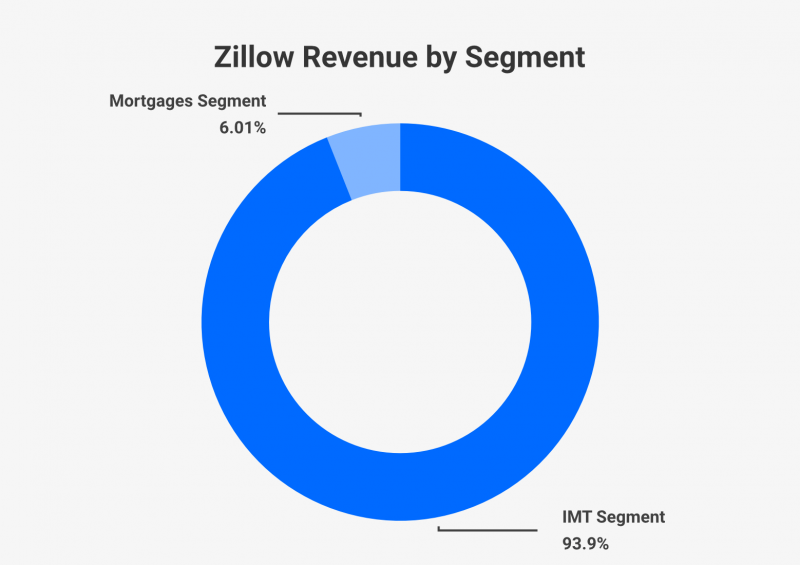
Zillow's complex business structure is evidence of how much the company has expanded over time. It now encompasses a multitude of businesses beyond the original Zillow.com website. Below, we'll explore some of these businesses to give you an idea.
Premier Agent
9 out of 10 Americans use an agent to sell or buy their home and guys from Zillow know this very well. They are not trying to replace agents, instead, they view agents as a very lucrative target audience. In fact, the major part of Zillow revenues, which amounts to $1.4 billion, comes from Premier agents. Zillow offers a suite of products to agents that are marketed as ‘Premier Agent’, which includes:
- Advertising on Zillow and Trulia - agents pay a fee that depends on the Zip Code, to appear in home searches.
- My Agent - is an opportunity for an agent to be the only agent a buyer sees next to listings.
- Premier Agent CRM - is a tool to manage relations with potential and current clients.
- Premier Agent Direct - is an array of options to advertise listings for agents.

Basically, Zillow covers all essential business needs of an agent, such as:
- Attracting buyers and sellers
- Promoting listings
- Promoting the agency and agents
- Managing relations with existing and potential clients
This is probably one of the reasons why this business has been so successful.
Rentals
The company also owns the largest rental network in the US called Zillow Group Rentals that is comprised of Zillow, Trulia, and HotPads. The network brings around $274 million in revenue, which is 10% of the total group revenue.
The rental revenue comes primarily from property managers that pay for advertising on the network on a cost per lead, cost per lease, and cost per click basis.
There are two rental advertising products:
- Zillow Rent Connect - lead generation tool for large property management companies. Service includes the display of listings across the Zillow rental network and transferring all inquiries directly to property managers.
- Zillow Rent Connect Boost - PPC advertising for multi-family development companies where advertisements are shown above the renter’s search results on Zillow websites for real estate.

In 2018, Zillow has also launched a set of tools to simplify the apartment hunting process for renters. For $29 renters can get their:
- credit report from Experian
- eviction history
- background check from Checkr
Mortgages
Getting a mortgage is an important and often painstaking step in the home-buying cycle. That is why Zillow decided to incorporate tools and information to help buyers find the right mortgage solution. This not only assists buyers in their journey but also provides lenders with an opportunity to market themselves to their potential clients.
In 2022, Zillow has earned $119 million in advertising services for lenders and Zillow Home Loans.
Zillow offers two advertising products to mortgage lenders:
- Custom quotes - is a mortgage shopping tool with which consumers can compare quotes from lenders based on the information they’ve put in.
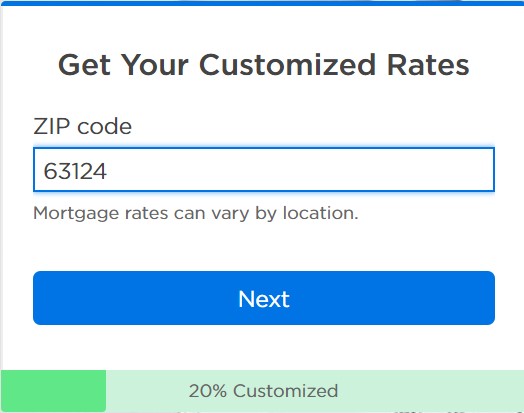
- Long-form quotes - is a way for consumers to get connected to the appropriate lenders based on the information they’ve supplied in the long-form survey.
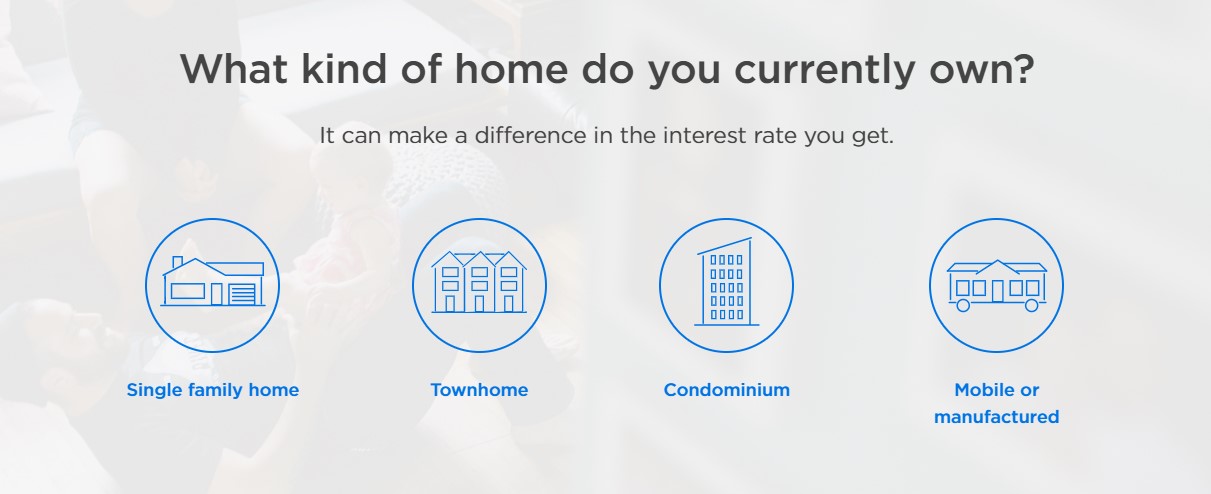
Lenders pay Zillow for the advertising services either on a subscription basis or a per-lead basis. The costs depend on the loan amounts, credit score, and loan type.
To ensure fairness for the consumers, Zillow uses a rating system for lenders. Consumers rate lenders and this rating play a big role in how often a lender appears in ratings and/or how often they get referrals.
Zillow Home Loans is a mortgage origination service that is part of Zillow's Homes segment. It serves as a platform that helps potential homebuyers find the right mortgage for their needs by providing access to a network of local lenders. The service is designed to streamline the homebuying process by allowing homebuyers to apply for a mortgage online and receive pre-approval within minutes. Zillow Home Loans is one of the many services offered by Zillow, which aims to transform the way people buy, sell, finance, and rent homes through a single digital experience.
Why Create a Website Like Zillow or Trulia?
You probably already know why this world needs another Zillow, otherwise, you wouldn’t be here, researching this topic, would you?
However, before we proceed to deep diving into how to create a website like Zillow. Let us first look at “why” you would do this project in the first place. Knowing your “why” is a great way to start any endeavor.
So here is our reasoning as to why it may be worth competing with the Zillow monster. The basic idea is to play on the weaknesses of your competitors (believe it or not, Zillow also has them!) and avoid being smashed by their strengths. Your “why” or reason for creating another service is to offer a better alternative to sellers and agents. In order to do that, you need to first know those strengths and weaknesses, as well as external opportunities and threats really well. So here is the basic SWOT analysis of Zillow.
| Strengths | Weaknesses |
|
|
| Opportunities | Threats |
|
|
Judging by the weaknesses stated above, one of the best ways to compete with Zillow is with a great local strategy. Zillow is a global giant company by nature. This is both their strength and weakness. They cannot provide equally great data and services to all their users in all areas. Concentrating on a particular geographical region can have a lot of benefits:
- Exceptionally accurate and complete listings data
- Content and tools that are relevant to the specific region and target audience
- Personalization
- Targeted advertising.
Let's discuss estimates for your Zillow-like website!
Contact UsHow Hard is it to Create a Website like Zillow?
Simply put, it is very hard!
The things mentioned above are not even the tip of the Zillow iceberg. The website is like a swiss army knife with loads of tools for home sellers, buyers, and industry professionals. They have a big crew dedicated to it, working 24/7. Technology and Development accounts for 24.28% of Zillow's expenses, which is over $500M!
However, Zillow, as you see it now, wasn’t built in one day or in one go. It was a gradual evolution process. They’ve started with the core functionality of a listings website then added functionalities and features along the way.
If you don’t have as much money as Zillow, the only way to start is with a really smart differentiated “minimum viable product” or MVP.
If you are unsure of what should go into your MVP you can use a Kano survey. It is a good tool to determine the core functionality and how potential or current users perceive the usefulness of your product’s features. By the end of the survey you should be able to categorize all your features into three categories:
- Mandatory features - the features that users expect by default, e.g. like being able to register/login on a website...
- Linear features - the core features, the ones that make users go to your website instead of somebody else’s, e.g. the most complete home-listings data.
- Exciter features - the nice-to-have features that are not expected by users, but that add value to their experience, e.g. like Zestimate.
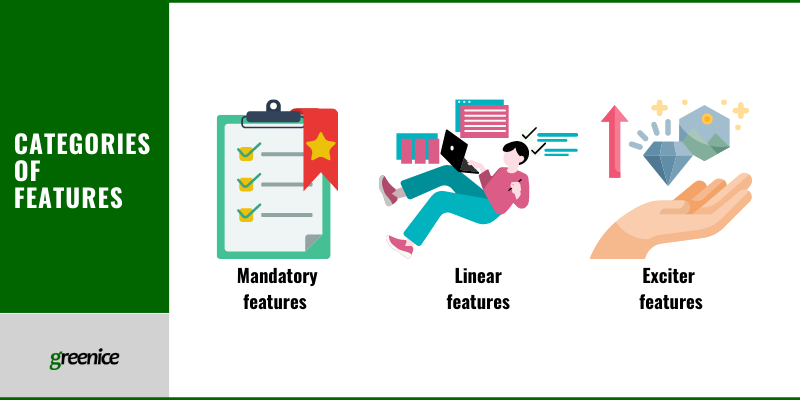
This categorization will help you determine what features should go into your MVP and which should be left for later phases.
As mentioned before, a survey is a good way to do this. Below we share a list of linear and exciter features that will help you get started.
Linear/Core Features: Help Them Find or Sell Their House
What is the most important part of a listings website? Listings! (Duh!).
Therefore, the most essential features of a website like Zillow are:
- A listings database
- Listings pages
- Robust search
Let's go over each of them.
1. Listings Database
So where will you get your inventory from? Zillow uses a combination of sources:
- Multiple Listings Service
- User contributions
Most of the property websites, including Zillow, rely on Multiple Listings Service or MLS for their home listings data. This is one of the best ways to get access to a lot of relevant listings data.
However, MLS integration can be challenging. First of all, you need to be a licensed agent/broker in your region(s) and you need to be a member of a particular realtor organization. These requirements depend on the MLS in your region(s).
Also, if you plan to use data from different MLS systems, you might encounter a problem in data standardization. Each MLS uses its own way of keeping listings data (data fields, formats, etc.) which makes it difficult to display multiple MLS feeds on your website. Tools like Spark API can help you to streamline access to data and ensure it’s displayed correctly.
In addition to that, whenever Zillow CEO and representatives get a chance, they always mention that part of their listings is contributed directly by users. Namely, out of 110 million listings, 80 million have been updated by users.
It is great to be the primary source of information for a listings website! Therefore, you need to make sure you have all the necessary functionality that allows sellers and agents to upload their own listings on your website, like:
- Form to fill out about a property
- Picture and video upload
- Description field

2. Robust Search
Even if you have the greatest listings database, it would have little value without a convenient and robust search. Zillow offers very sophisticated search functionality that can be divided into two categories:
- Location
- Filters
Zillow's location search is very impressive. Users can start searching by entering a zip code and continue with a map search:
- Conduct a polygon search by drawing a circle around an area a user is interested in
- Search for properties that are near schools
- Hover over the dots to see the listings
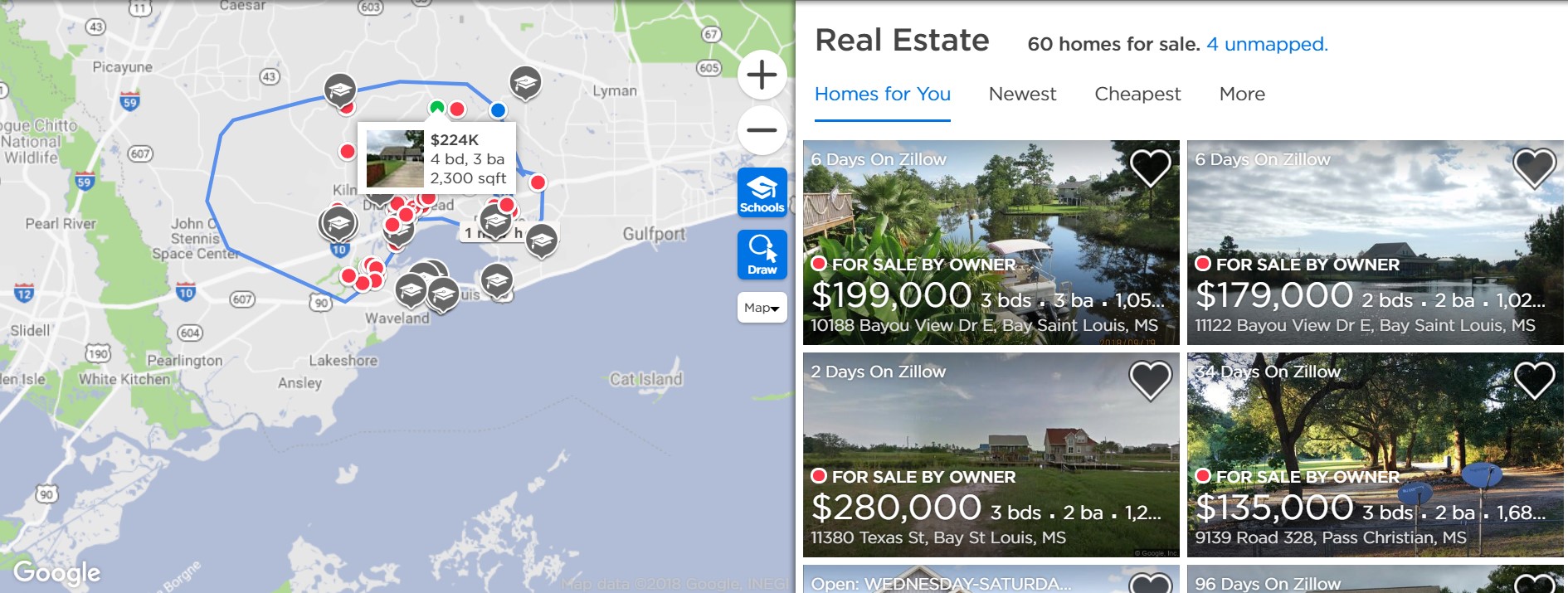
And, as you can see, all of this is powered by Google Maps. Both Zillow and its competitors use Google Maps for their geospatial search. In addition to this, buyers can use a multitude of filters to narrow down their search:
- Listings type
- Price
- Home type
- Number of beds
- Other - number of baths, square feet, lot size, year built, keywords, etc.
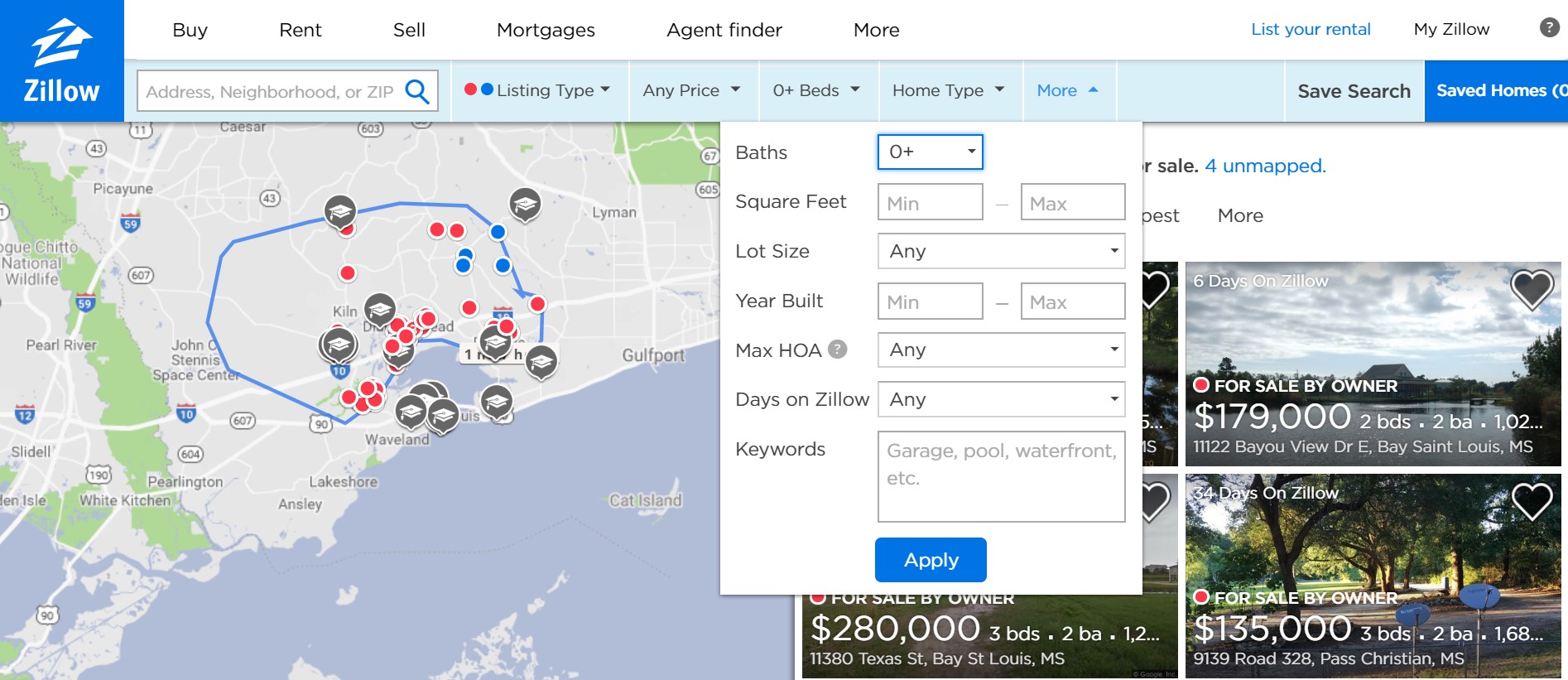
3. Listings Pages
The listing presentation is also very important. Listings pages need to be informative and attractive. Zillow listing pages contain:- Property information - a lot of pictures, property descriptions, and property facts
- Zestimate - automatic home valuation by Zillow
- Price/tax history
- Mortgage calculator
- Home values in the neighborhood
- Nearby schools with a GreatSchools rating
- List of agents and mortgage lenders
It is very important that the information is presented in a very convenient user-friendly manner.
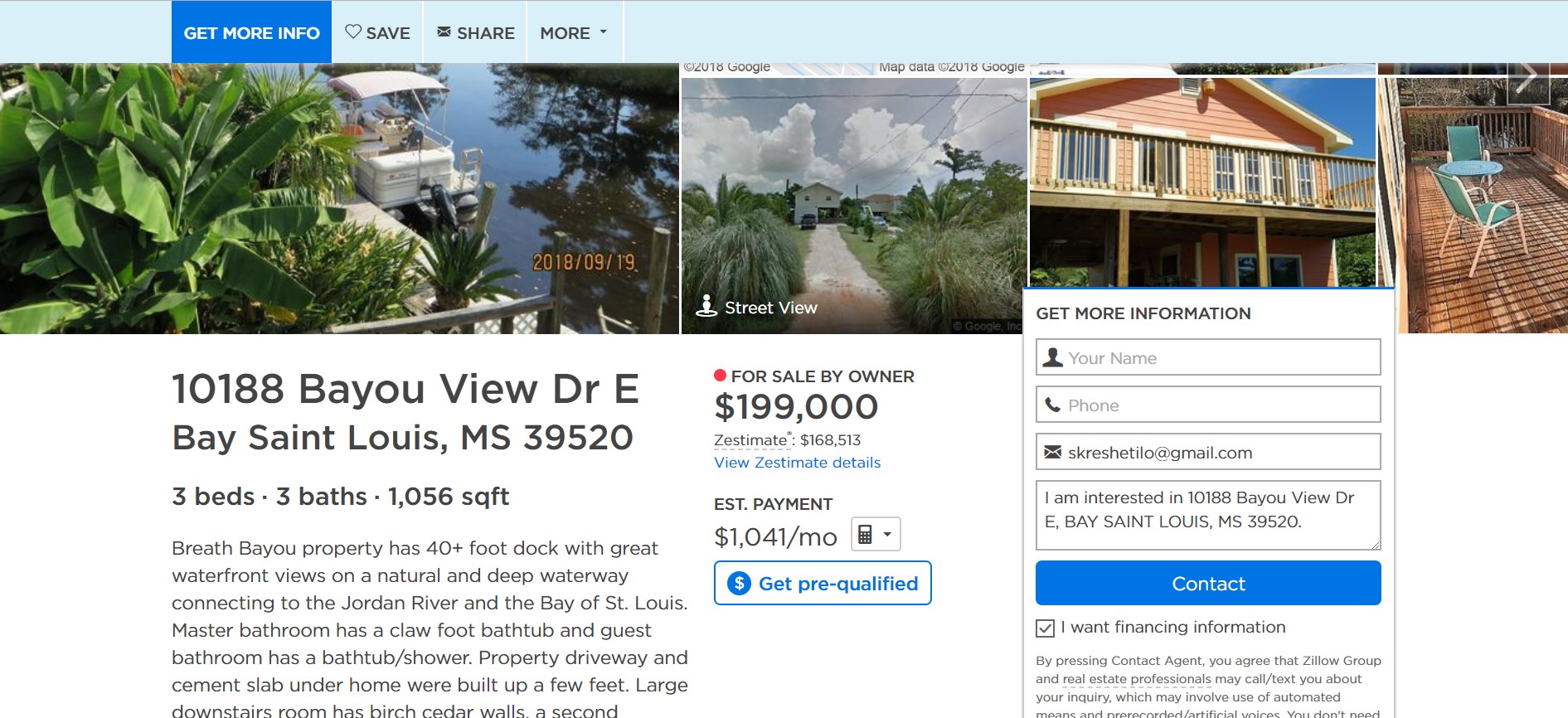
Exciter Feature: Home ‘Zestimation’ at the Push of a Button
Zillow has a lot of exciter features, in fact, so many that we wouldn’t be able to cover them in one article. So I suggest we take a look at their most famous and controversial feature - Zestimate.
Zestimate is a great example of an exciter feature. It is a very ambitious project aimed at automating the estimation of the house value. Although, they’ve been very careful to warn everyone that Zestimate is not intended to replace the house appraisal, it’s a starting point and a tool for those curious about their house worth.
Nonetheless, this feature has been adored and hated by millions. The ease of finding out the current price of your house with a push of a button is both a good thing and a bad thing. The good thing is that you have a quick but possibly inaccurate assessment of your house. The bad thing is that buyers can lowball you with offers based on the low and inaccurate Zestimate result.
So how does Zillow arrive at those numbers? Zestimate is a statistical model, it is a smart blend of big data and artificial intelligence.
Zestimates are based on:
- Past sales data - past sales prices, mortgage records, prior tax assessments
- Physical features of a house - bedrooms, bathrooms, square footage, neighborhood, proximity to water, etc.
The process of home ‘Zestimation’ consists of the following three steps:
- Cleaning the data
- Training models
- Scoring
In the first step, all the data that consists of past sales and physical home attributes is cleaned of any information that is irrelevant for determining the market value of a house. For instance, a mother selling a house to her son below the market value, or a foreclosure are pricing outliers and should be excluded. Then, Zillow’s models are trained on the ‘recently sold’ data to form relationships between prices and physical characteristics of homes. This is how Zillow estimates the value of things like extra square feet, proximity to a park or a lake, etc. In the third step, these relationships are applied to all homes being Zestimated. The accuracy of the estimate depends on whether or not there are enough recent transactions in the neighborhood. If there haven’t been many house sales recently, then the data used in the Zestimate model will be outdated and with a very wide range (the wider the range, the more likely there is an error in pricing).
How to Build an App Like Zillow and Trulia
Strong mobile presence is vital in the real estate industry (as in many others), so sooner or later you will need a mobile app.
If you want to know how to make an app like Zillow or Trulia, you need to first think about who will be its primary users. Each group of users will require their own functionality, or even a different app altogether. It is likely that buyers and renters will be your biggest mobile target audience. Think what extra benefits can mobile house search give to such users:
- Searching on-the-go with geolocation
- Receiving instant push notifications about important updates the buyers are interested in
- Messaging with agents.
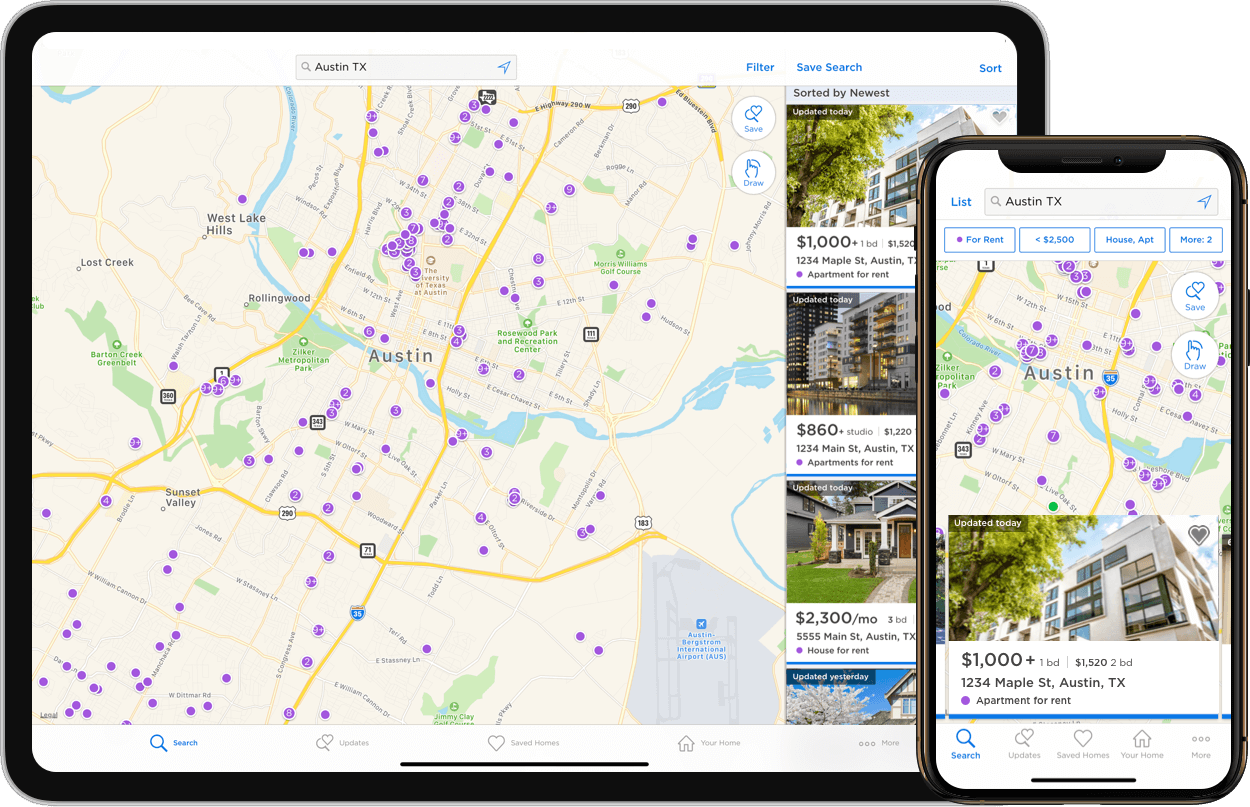
These features are of key importance and although almost every major home search app offers them, there is definitely room for improvement. If you take a look at Zillow’s app reviews, you’ll see quite a number of poor reviews related to the inadequate search.

You need to bear in mind that it is especially challenging to search through millions of listings on a mobile phone, so the most common user complaints are:
- Lack of filters to narrow down the search
- Poor synchronization with the web version of the service
- Overload of irrelevant notifications and missing the important ones.
So, if you find a way to provide a better mobile user experience, you will win the users from the competitors!
How Much Does it Cost to Create an MVP of a Listings Website?
It should have been clear by now that Zillow is a very complex online real estate platform. It is not something that can be built with off-the-shelf solutions.
The best and actually, the only way to build a real estate website like Zillow is with custom web development. The technology stack depends on the skill-set of the development team. Our team uses LA(N)MP stack and one of the PHP frameworks (Yii, Laravel, or Symfony), which can work perfectly for a complex marketplace like Zillow.
The cost of your MVP depends largely on what features and requirements you require for the first version of your platform. Below is an example of how much it may cost to create a real estate website with PHP.
Listings website MVP:
- MLS integrations
- Manual uploading of listings data by sellers and agents
- Advanced listings search with Google Maps integration
- Content Management System
A website can cost $30,000-50,000 for an MVP, and $50,000-70,000 for a more advanced platform with necessary MLS integration.
The estimates includ the work of the front-end and back-end developers, as well as a project manager and QA engineer.
How to Apply This To Your Business
Creating another Zillow is not a piece of cake, to say the least. It takes a focused differentiation strategy because you cannot start with being everything to everyone like Zillow is today. It also takes a very skilled web development team among many other things.
For the technical part, you can consider us to help you make your own real estate website like Zillow. Our team is wired to build complex marketplaces and platforms like Zillow. We have been developing feature-rich websites with complex back-end since 2007.
Get a free technical consultation and an estimate of your real estate listings website!
Contact UsRate this article!
5


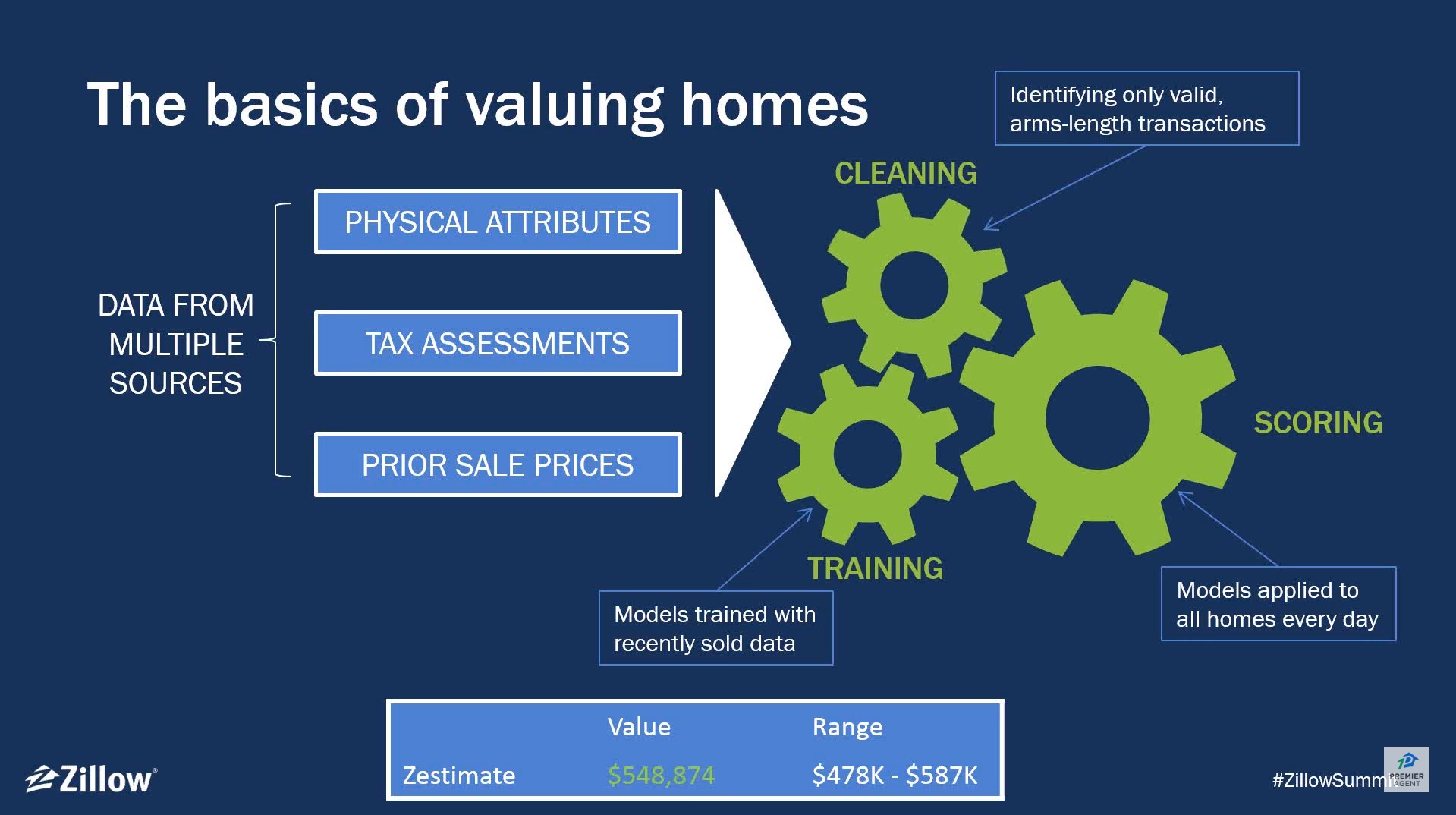




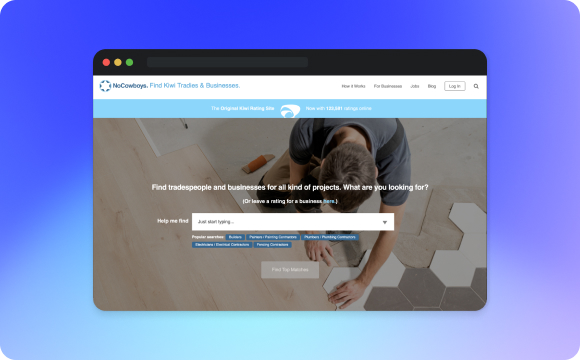



 Sign in with Google
Sign in with Google
Comments (0)